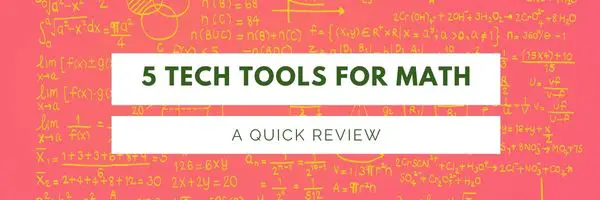The use of technology in the classroom can help students develop numeracy skills, understand how math is used in their everyday lives, and become critical thinkers.
It is essential for teachers to be aware of the pedagogical value and appropriate uses of technology in their teaching. Programs in teacher education and professional development must continually update practitioners’ knowledge of technology and its application to support learning.
1. FluidMath
FluidMath is an app that combines the familiar and natural experience of sketching math problems with the power of computer generated solutions. The software enables users to write handwritten math formulas on a pen-enabled tablet PC or interactive whiteboard and then generates algebraic expressions, computations, graphs, dynamic animations, and much more.
This tool is great for helping students understand concepts and solving math problems. Teachers can also use it as a supplemental tool, especially for constructing graphs on an interactive whiteboard or other classroom display.
This app also uses patented color-coding of equivalent expressions, making it easy to spot math mistakes and highlighting areas for improvement. The app also provides a range of math activities, including step-by-step problem solving and identifying equivalent expressions in identities.
2. Pear Deck
Pear Deck is a free online presentation tool that lets students respond to questions and interact with slides from any computer, tablet or smartphone. It works with Google Slides and PowerPoint presentations.
It has a large library of templates you can use to add interactive features like drawing, handwriting and audio recordings to your slide presentations. Teachers can also use it as a live feedback tool, allowing them to ask students questions or collect feedback on a lesson or activity in real time.
You can create any type of activity you want using the thousands of templates. They’re organized into categories, such as bell ringers, “middle of the lesson” activities and exit tickets/reflections.
3. Google Forms
Google Forms are a popular technology tool used by teachers to create surveys and quizzes. They offer a variety of question and response options, including multiple-choice, dropdown, and linear scales.
The program also offers the option to integrate YouTube videos and images. This is an excellent way to add interest and context to the questions asked.
In addition to being a free program, Google Forms are also easy to use and available on any device. This makes them a great choice for teachers who want to use a form to collect data and track students’ progress.
Forms are a key component of the Google Workspace, allowing team members to collaborate on documents simultaneously and monitor requests in real time. Form responses can be viewed and downloaded, and updates can be notified via Gmail accounts linked to the forms.
4. Desmos
Desmos is an online graphing calculator with features that promote inquiry-driven learning. It is a free, easy-to-use tool that allows students to create and manipulate visual representations of math equations and inequalities.
It also provides teachers with a variety of tools that allow them to track student progress and lead the math discourse in their classrooms. Educators can use the teacher dashboard to see how students are working, and they can coach them one on one or in small groups during practice and tutoring lessons.
Many educators have said that the best Desmos activities drive students to discover their own solutions to problems. This is a crucial skill to develop.
5. Math Blogs
One of the most popular technology tools for teaching mathematics is math blogs. These are a great way for teachers to connect with their students and improve their teaching skills.
Some of the main features of these blogs include problem-based learning, interactive worksheets, and math games. They also have a lot of free content for educators to use in their classrooms.
Another benefit of using a blog is that it removes the walls of the classroom. This allows a much larger audience to view student work. It also provides a platform for peer tutoring and feedback.

